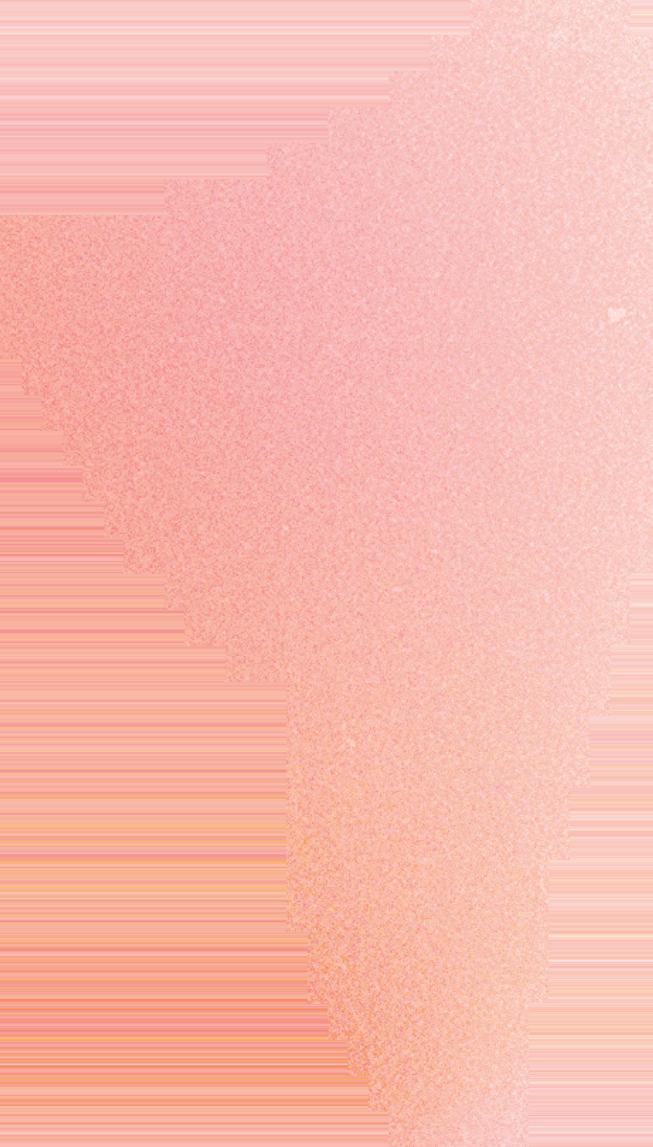






























Unstuck and























































































Trauma with Somatic Healing




































































































































UK | USA | Canada | Ireland | Australia India | New Zealand | South Africa
Vermilion is part of the Penguin Random House group of companies whose addresses can be found at global.penguinrandomhouse.com
Penguin Random House UK One Embassy Gardens, 8 Viaduct Gardens, London SW11 7BW
penguin.co.uk global.penguinrandomhouse.com
First published in the United States of America by Avery in 2025 This edition published by Vermilion in 2025 1
Copyright © Brittany Piper 2025
Book design by Ashley Tucker
Somatic Experiencing®, SE™, SEP™, CSS™, SCOPE™, Crisis Stabilization and Safety™, the Sphere Logo®, the CSS Logos and all associated trade dress are owned by, and used with permission of Somatic Experiencing Trauma Institute (“SEI”) and are registered and used in the US, Canada, EU, and other countries in English with certain foreign transliterations. The SEI marks may be used only with the express permission of SEI.
SEI does not endorse, approve, or support any specific authors, practitioners, or contributors unless explicitly stated otherwise. Views, opinions, methodologies, or practices expressed by individuals regarding SEI modalities are their own and do not necessarily reflect the official views of SEI.
The moral right of the author has been asserted.
No part of this book may be used or reproduced in any manner for the purpose of training artificial intelligence technologies or systems. In accordance with Article 4(3) of the DSM Directive 2019/790, Penguin Random House expressly reserves this work from the text and data mining exception.
Typeset by Jouve (UK), Milton Keynes
Printed and bound in Great Britain by Clays Ltd, Elcograf S.p.A.
The authorised representative in the EEA is Penguin Random House Ireland, Morrison Chambers, 32 Nassau Street, Dublin D02 YH68
A CIP catalogue record for this book is available from the British Library
ISBN 9781785045066
Penguin Random House is committed to a sustainable future for our business, our readers and our planet. This book is made from Forest Stewardship Council® certified paper.
This book is dedicated to the children found in each of us.
The ones who fought to keep us free. The ones whose armor protects us still today. May they rest now. May they play. May they dream. We can take it from here.
10. Self-Guided Experiencing: Before You Begin 213
11. Anger and the Armor of Fight 221
12. Fear, Anxiety, and the Armor of Flight 228
13. Depression, Burnout, and the Armor of Shutdown 236
14. Dissociation and the Armor of Functional Freeze 244
15. Appeasement and the Armor of Fawn 251
16. Resourcing for Common Health Issues and Everyday Triggers 254
Conclusion: Let the Wild Rumpus Start 263
Appendix A: Nervous System Mapping and Tracking 269
Appendix B: How to Find a Somatic Experiencing® Practitioner 281
Appendix C: References 283
Acknowledgments 291
Notes 295
Index 299
The Somatic Experiencing® modality is provided for educational and informational purposes only and does not constitute providing medical advice, medical treatment, or tools used for diagnosing or treating a health problem or disease. Those seeking personal medical advice should consult with a licensed physician. For more information about the Somatic Experiencing modality, please visit the website www.traumahealing.org.
A hero lies in you.
Mariah Carey (Hero, 1993)
As I type this letter to you, my dear reader, I am sitting at my kitchen counter with my four-month- old daughter still sound asleep in her car seat beside me. We just arrived back home from running a few errands. My three-year- old son is at the park with our nanny, and my husband is upstairs in his off ice working. In the background, a shuff led blend of Celine Dion radio plays lightly through the house speakers, f illing my quiet and sun-soaked home with echoed melodies that remind me of my childhood—Whitney Houston, Mariah Carey, and Phil Collins, to name a few.
To many, this might seem like just another boring day.
But for younger me, the twentysomething Britt literally battling for her life, this was the type of day I couldn’t have even dreamed of—a day devoid of chaos and unhealthy behaviors in the name of survival. Perhaps you know the feeling. The juxtaposition of hopelessly longing for the never- ending roller coaster of dysfunction to stop, while
also being fearfully resistant to exiting the ride you’ve come to know all too well.
As someone who survived and made it off that roller coaster, I’m here to tell you it doesn’t have to be a life sentence. And that what will actually save you from the chaos you’re held captive to isn’t found outside of you but within you. It’s true; the hero of this story isn’t your therapist, your medications, your partner, your kids, or even this book. The hero in your life, as cheesy as it sounds, has and always will be . . . you. Believe it or not, your body and brain were innately and brilliantly built not just to survive in the worst of conditions, but to truly live and thrive. You, my friend, are your own best healer.
Ironically enough, as I write to you these words, Mariah Carey’s self- empowering anthem “Hero” plays in the background.
Look inside you and be strong . . .
I’ve come to learn, in both my personal and professional lives, that healing doesn’t mean becoming a new version of you. Healing is rediscovering who you were, before the survival responses of your nervous system told you who to be. Following trauma that’s too overwhelming, the nervous system often becomes ensnared in chronic states of survival mode (f ight, f light, shutdown, functional freeze, or fawn, which you will learn about in detail later in this book). This can leave us seemingly trapped in the adrenaline-fueled survival responses of the past— aka the “threat response cycle”— even though we are safely living in the present. As Dr. Peter A. Levine, the developer of the Somatic Experiencing ® trauma recovery method we will explore together in this book, aptly describes it:
Trauma is an internal straitjacket created when a devastating moment is frozen in time. It stif les the unfolding of being and strangles our attempts to move forward with our lives. It disconnects us from ourselves, others, nature, and spirit. When overwhelmed by threat, we are frozen in fear, as though our instinctive survival energies (adrenaline) were “all dressed up with no place to go.”
With this description in mind, we can easily say that healing is aimed at allowing ourselves—more specif ically, our nervous system— to get unstuck from the overwhelm of the past and catch up to the safety of the present.
Soma means “of the body,” and in Somatic Experiencing (SE™), we gently guide you out of your head and into the experience of your body, where the nervous system can be accessed. By learning the language of your unique system through sensation, feeling, and emotion, you’ll have a greater capacity to process discomfort or what was once too overwhelming to be with. This will allow your system to complete its thwarted threat response cycle and release the pent-up adrenaline, or survival energy, from the past. Through Somatic Experiencing, you can become a more present and regulated you.
Imagine the protective layers you’ve had to wear to survive trauma as a set of nesting dolls. Healing necessitates cracking open and shedding each heroic layer —the people-pleasing part of you, the anxious part of you, the defensive part of you, the isolating part of you, and the numb part of you. Healing is holding compassionate space and understanding for each of these versions of you, while also reminding yourself that the core of who you are has never been too far lost, but just hidden away under these shields that were meant to keep you safe.
Woven throughout the pages of this book, you’ll witness my own confrontations with the many coats of armor that once kept me alive but eventually overstayed their welcome. You’ll also be given a somatic roadmap that will take you on a profound yet gentle journey to come to know your own armor. When in your life did your nervous system armor up? Is it f ight, f light, shutdown, freeze, or fawn? What are the characteristics of that armor? How does it inform your patterns of behaviors, thoughts, beliefs, emotional states, overall physical health, and more? Why, even after the trauma has passed and the battle is over, are you stuck with this armor on? How can you begin to slowly remove it? And what will take its place?
My deepest hope for you is that while reading this book, you begin to soften to the parts of you that you’ve long seen as burdensome and self-sabotaging, and recognize that they were simply maladaptive coping patterns of self-protection. I hope that by staying open and curious about these patterns, and by learning the science behind what drives them, you learn that you in fact are not broken and do not need f ixing, and that the ways you’ve had to survive make perfect sense, based on your body’s and your brain’s instinctual responses and past experiences. When I ref lect on my own healing, that’s what I would have hoped for myself, too. This book is the culmination of everything I wish I had known in my darkest years. This is translation work, really, not the discovery of new information. It’s the simple somatic practices, the revolutionary knowledge, the inspiration, and the compassion that would have gifted me a lot more living and a lot less just surviving.
If you’re reading this book, it’s likely you’ve exhausted a long list of healing options just as I did, yet you still feel stuck. The good news is, you’re reading this book —a book that will help you f inally discover the innate tools for self-healing that your body has naturally carried all along. As I type this, I can hear the collective cry from so many of my clients during the years: “After decades of suffering, I wish I had known about these practices sooner!” At last, my friend, you’re on the precipice of true and lasting healing. I’m beyond excited for you.
In this moment, I’m brought back to the present with my daughter. She gently sleeps with a dreamy grin spread across her face. As I observe her, I see me. And again, I’m reminded of younger Britt. Had you told her that she’d one day write a book, f illed with personal tales of hope, healing, and a tried-and-true roadmap for recovery, she wouldn’t have believed you. The truth is, throughout a good majority of my time on this Earth, my brain lovingly suppressed many of the memories I gathered to share with you in this book. I’d liken crafting these pages to rummaging through a dust- covered attic f illed with keepsakes, portraits, and boxes sealed for decades. Each box packed
with experiences, both good and bad, that had been tucked away and hidden out of sight.
You, too, have an attic to explore, f illed with a spectrum of experiences—joy, grief, love, fear, and more. As I slowly sift through my stories in this book, I hope the learned tools and my own therapeutic process provide you comfort and courage to do just the same. Body-First Healing will empower you with my proven framework to healing that has compassionately guided thousands of clients globally and removed the defensive walls that were keeping them stuck, allowing them to re- create a life deeply centered around presence, connection, vitality, and joy. Whatever pain has led you to this point, I hope you know there’s more to life than just surviving.
Now let’s rediscover who you are, before the pain and armor told you who to be.
Lovingly, Britt
As you journey into the pages of this book, you might f ind that the stories or concepts shared may trigger feelings of unease within you. This is only natural when ref lecting on the nature of trauma and how it shows up in your life today. To support your capacity to move through that unease, I’d like to introduce you to a foundational element of Somatic Experiencing, known as “resourcing.”
A resource is any experience that cultivates more settling, stability, or calm in your body or nervous system; more presence, more spaciousness, more breath. It is the f irst step for creating a deeper capacity for nervous system regulation, and it is necessary for moving through stress. It’s important to create a foundation or “toolbox” of resources of anything that brings with it a feeling or sense of okayness, goodness, or slight betterness.
These resources can be internal (such as a pleasant emotion, sensation, visualization, or memory) or external (such as a slow orientation or observation of the space around you with your senses, co-regulation or connection with another, or supportive movement).
As you navigate through this book, I encourage you to lean into the resources that support you as needed. You can f ind much more detail about resourcing, including step-by-step instructions and some go-to practices, in chapter 16.
CHAPTER 1
I’ve spent most of my thirty-six years of life trying to piece together the tarnished puzzle of my traumatic younger years. I have little memory of it all; I’ve only heard whispered tales passed down by family members comfortable enough to share. And so, I’ve become an expert investigator into my own background. Although I don’t remember much of my upbringing, I remember vividly how I felt — unstable, insecure, afraid, and disconnected. As I turned the corner into adulthood with these same feelings in tow, I began to realize that this sense of being “unlovable” wasn’t normal or healthy. That began my relentless journey to uncover: Who was younger Britt? And what experiences and events made her who she is today?
Throughout this book, I’ll share and compassionately explore what I discovered and the nuances of my story. But for now, I’ll give you a rough sketch of my experiences growing up and how I can now see they shaped me.
I was born in 1988, at Sharp Grossmont Hospital in Southern California. What should have been a beautifully memorable day was seemingly anything but. Right after my birth, I was taken from my mother and placed into foster care because methamphetamine was found in my system. And my father? He had no intention of being a part of my life. Although I would eventually be reunited with my mom, the internal damage was done: The seeds of unworthiness and fear of abandonment were planted into my developing subconscious. In my younger years I was insecure and disconnected from myself, and this began my patterns of codependency and my tendency to appease others so that I would be accepted.
Years later, this abandonment wound was exacerbated by the sudden loss of my brother in a car accident when we were teenagers. Spiraling out of control and desperate to numb my unbearable feelings, I soon became a slave to alcohol and drugs. However, in my attempt to run from the grief, my self-medicating nearly ran me into my own grave. I ended up in a hospital, where I f latlined from alcohol poisoning. Determined to live, I began attending Alcoholics Anonymous, because surely the problem was the alcohol— or so I was told by my therapist.
Two years later, at the age of twenty, I was brutally raped and beaten by a stranger who had helped me change a f lat tire. Even though I assisted in putting this man behind bars for sixty years, the very public and very painful two-year trial process left me even more traumatized. I once again retreated to my old patterns of wanting to numb my suffering by continuing to drink so much that I ended up in a jail cell after a violent drunken night out, not even thirty days after the trial sentencing. (We’ll get to those details later.) This time, full of rage and despair, I off icially became a version of myself I didn’t recognize.
As is often said, you have to hit rock bottom before you can start to make the changes you know you need to make. In my case, my bottom was the cold, hard concrete of a six- by- eight- foot jail cell.
It was there that I was forced to sit with the discomfort of all that I had been avoiding for so many years. No pills, no alcohol, no chaos, and no dysfunction to distract me; it was just me and my feelings, alone together in a cage. I felt like a pressure cooker ready to explode. The anger, the grief, the shame, the fear—they came crashing into that bare cell in intense waves of sensation and emotion. I found myself shaking, trembling, crying, sweating, wailing, and moaning. I didn’t learn until later that this was my body releasing— or “discharging”— the stuck and stored survival energy (adrenaline) from the past. I was surprised to make it out alive, but I did. And amazingly enough, I felt lighter and remarkably better.
During those few days, the release and processing of decades- old pain gave way to a profound clarity I hadn’t ever experienced. In those crystal- clear moments of ref lection, it wasn’t lost on me that I was behind bars at the same time as my perpetrator. This enlightenment revealed that he and I perhaps had more in common than I’d initially realized. During the trial, his defense team had highlighted his traumatic upbringing: He was raised by an aunt as one of f ifteen kids, and he’d had poor schooling, as well as mental and physical health issues. We both were dealt an ugly hand in life, and we both were offered the same choice: Allow your pain to make you better, or allow it to make you bitter. He made his choice, and he’d spend the next sixty years behind bars, being reminded of his decision. And me? I was seemingly venturing down the same path. At a crossroads, I had to decide if this was truly how my life would go.
When I went to court after three days in jail, I faced a judge who knew me from my sexual assault case. The words she spoke to me were profound and have stuck with me: “We’re going to drop the charges, but . . .” she paused and repeated, “but, you need to learn to live with your pain better.”
Those four words— live with your pain. That was it, the turning point when everything just clicked. She didn’t say to get over the pain, or get past it and start over. She said to live with the pain.
I realized in that moment that I couldn’t run anymore, and that the path of numbing, avoiding, and “least resistance” was actually proving to be more destructive than the alternative of facing the pain of the past. It was time to surrender and remove the decades of armor I had built up. Only then could I f ind from within the self- compassion and resilience to receive the healing I so rightfully deserved.
Until that point, I had spent most of my recovery sitting behind closed doors across from conventional, buttoned-up therapists who insisted I verbally recall and replay each excruciating moment of my twenty-plus years of severe trauma. “Exposure-based therapy,” they called it. We revisited and rehashed each event, as best as I could remember. We talked and talked ad nauseum, always staying strictly in the fast lane of thought, story, cognition, and meaning and rarely slowing down enough to allow emotions to emerge. Meanwhile, my body felt like a buried explosive, a charge just waiting to be detonated by the tiniest trigger or movement from above. If I expressed discomfort or diff icult emotions, my therapists would rush to encourage me to think about “something positive.” Yet, the explosive was still there.
Despite the therapists’ best intentions, I’d leave these sessions feeling more guarded, anxious, and hopeless than before. The more I talked, the more stuck I became. Given no tools to process and manage the overwhelming discomfort of my body—rage, grief, fear, constriction, and dissociation, to name a few—the only temporary f ix was to rely on the cocktail of medications I’d been prescribed for my many diagnoses: attention def icit hyperactivity disorder (ADHD), anxiety, depression, post-traumatic stress disorder (PTSD), and more. It was a vicious cycle, and I began to doubt not only the medical system, but also myself. I knew that something had to change.
Still reeling from the profound healing experience I’d had in that jail cell, I decided to take my recovery into my own hands, and I set
out on a quest to understand the imprint my traumas had left. Through this journey, I began to discover groundbreaking evidence, not talked about in mainstream recovery circles, that healing begins when you get out of your head, out of the story, and into your body. For me, learning this concept was revolutionary: Wait, so healing doesn’t have to do with talking? It has to do with feeling? Drawing from the decades- old science, I focused on three important concepts:
• Trauma can easily be described as any experience that’s too overwhelming for the nervous system to cope with. After trauma, our nervous system can become locked in states of protection (f ight, f light, shutdown, freeze, or fawn), further wreaking havoc on our lives, relationships, and health.
• The nervous system doesn’t operate through thoughts, words, or cognition, but rather through the somatic (body- oriented) experience of feelings, sensations, and emotions—a language never truly explored in conventional therapy.
• Humans are considered “bottom-up” beings, because 80 percent of the messages sent through our vagus nerve (our information superhighway) are from the body to the brain, and only 20 percent are from the brain to the body. Bottom line: Your body has a lot more say when it comes to how you show up in your life and in the world. This is why I couldn’t just talk through it or create a “positive mindset” to f ind my way out of the anxiety, depression, and grief. I had to feel my way out.
In summary, I discovered that trauma isn’t created by the event; it comes from the nervous system’s impulse to subconsciously repeat, in the present, the responses it enlisted to survive the past. Some people stuck in this cycle shrink (shutdown) or run away (f light or f lee) when conf lict presents itself. Others appease (fawn) and sacrif ice their own
desires or boundaries to be accepted. Some blow up (f ight) when things feel out of their control. Many of us experience more than one of these responses, and our lives become ruled by them. Consider these as survival or management strategies that have overstayed their welcome.
During my research, I took a deep dive into Peter Levine’s work, which introduced me to the world of somatic or body- oriented healing. In the 1970s, Levine made groundbreaking observations of animals in the wild, which led him to ask an intriguing question: Why are animals in the wild, although threatened routinely, rarely traumatized?
Levine discovered that when faced with threat, wild animals employ instinctual impulses through their body (like shaking, trembling, growling, playing dead, etc.) that allow them to process, neutralize, and release the high level of survival energy (adrenaline) that is associated with the nervous system’s threat response cycle. His research concluded that although humans possess nervous system responses virtually identical to those in animals (thanks to our shared mammalian and reptilian brain structures, which we’ll explore in detail later), these instinctual impulses are often interrupted or overridden by our neocortex or human brain— our “rational mind.”
It should come as no surprise that Somatic Experiencing, a revolutionary trauma recovery method previously considered “fringe,” was born in the 1970s in Berkeley, California—the epicenter of progressive mindsets and intellectual curiosity at the time. Berkeley’s worldwide reputation as being an imaginative center of academic freedom made it the perfect place for Dr. Peter Levine to begin his research on the effects of trauma on both the body and the mind. With doctorates in biophysics from the University of California,
Berkeley, and psychology from International University, Los Angeles, Levine was driven by his personal adversity, his private work with trauma survivors, and his observations of animals recovering in the wild. His studies led him to the conclusion that talk therapy as a method to resolve trauma has limitations, because it doesn’t effectively address the accumulated arousal (stress hormones) that is entrenched and stuck within the body and nervous system.
Levine’s observation that wild animals can “shake it off” led him to ask why human animals get stuck in their trauma and wild animals do not. His remarkable research created the basis for today’s Somatic Experiencing. As he wrote in Healing Trauma: A Pioneering Program for Restoring the Wisdom of Your Body: “A threatened human being must discharge all the energy mobilized to negotiate the threat or it becomes a victim of trauma. This residual energy does not simply go away. It persists in the body and often forces the formation of a wide variety of symptoms, e.g. anxiety, depression, and psychosomatic and behavioral problems. These symptoms are the organism’s (body’s) way of containing the undischarged residual energy.”
Levine leaned into his f indings in nature and paired his theoretical approach with the hard science of the Polyvagal Theory, which was developed by his close friend and colleague, Stephen Porges. In the 1990s, Levine and Porges f inally put body psychotherapy on the map. Today, Levine’s pioneering Somatic Experiencing method of body-centered trauma resolution has been taught and embraced by more than 60,000 practitioners in more than 45 countries. His visionary work is celebrated all around the globe, and he has received some of the highest accolades from the most prestigious international medical institutions and organizations, including the Psychotherapy Networker Lifetime Achievement Award in 2020. Levine heartwarmingly ref lected on the award in an article published by the International Body Psychotherapy Journal: “Getting this award, not from a body-centered f ield, but from very traditional talk therapy
representatives, made it clear to me that the genie was out of the box; that it was no longer a fringe movement. Embodied psychotherapy is now part of the mainstream. Because again, what I discovered in the late 60’s and early 70’s was that trauma is something that not only affects the brain . . . it primarily affects the body.”1
In essence, when these stuck survival hormones are interrupted, either by an overwhelming circumstance or our own doing, they create chronic mental and physical health conditions within the brain and the body. One thing that compounds the problem for humans is that we are the only species on the planet with a split mind of conscious and subconscious experiences. As a result, we can often “get in our head” (or, in other words, our conscious mind) by over- conceptualizing our feelings, rather than just allowing ourselves to feel and process those feelings so the accompanying survival energy, or adrenaline, tied to them can then be experienced, expressed, and expelled. As we often say in the somatic space, over-thinking is an under-feeling problem. Here are some examples of how that can play out in our lives: We minimize or suppress our frustration or anger (f ight response) to “keep the peace” or “be a nice boy or girl,” we push away or override our fear or anxiety for the sake of “being calm,” we hold back our tears and “suck it up” or “stay positive,” we scroll and distract to escape what doesn’t feel good.
The body- centered understanding made so much sense to me: Feel it to heal it. It was no wonder recall therapy had little to no effect on me. Although I felt grateful for my body’s innate ability to quite literally keep me alive and protected throughout all the traumatic seasons of my life, I was done being stuck in survival mode.
It was in my season of research and discovery that I made the choice to switch to a body-f irst or somatic approach to healing. It didn’t take long after doing so for the laundry list of symptoms ther-
apists had attributed to my “diagnoses”—the crippling panic attacks, the suicidal ideation, the eating disorders, the ADHD, the fog of depression, the impulse to self-medicate, and even the attraction I had to codependent and abusive relationships—to magically lift and disappear. Within months, I threw away my pills. By coming back into my body and its natural wisdom, and f inally welcoming hard feelings, I was healed in remarkable ways, and I rediscovered who I actually was —before the pain and the armor told me who to be.
Now, more than a decade later, as a Somatic Experiencing Practitioner (SEP™) and trauma educator, I’ve made this work my life’s mission and have guided thousands of trauma survivors worldwide to the path of recovery.
Before venturing into the Body-First Healing Roadmap, it’s important that we f irst take a peek behind the curtain so we can better understand how we’ve created the culture of survival and stuckness that we are currently living in.
The rise of chronic physical and mental illness can easily be attributed to one thing: we created a world our nervous system doesn’t want to live in. Think of it this way: your nervous system is the security camera of your life, always operating in the subconscious, the background, to protect you from anything it perceives to not be safe. When perceived danger is near, it goes into active states of survival: f ight, f light, shutdown, freeze, or fawn. At the same time, stress (aka survival) hormones are released at high amounts throughout the body to prepare us for battle. As survival becomes priority number one, all other working systems of the brain and body (immune, digestion, musculoskeletal, hormone) fall to the back burner so that the nervous system can do its job well.
When faced with prolonged exposure to “perceived threat,” the
nervous system can become chronically stuck in these states of survival—wreaking havoc on our physical and mental health, which further creates higher levels of stress hormones in the body and brain. It’s a vicious cycle to get out of. And one that many of us face today, in our modern world. Here are some of the threats we face that contribute to this state of survival and stuckness:
• The societal pressure to do more, make more, “succeed more” to the point of burnout
• The divisive political climates we live in
• The fear of volatile economies
• The judgment faced when we express emotion or share vulnerability
• The environmental toxins our bodies are exposed to (in food, air, water, etc.)
• The constant bombardment and exposure to catastrophic news and world events
• The harsh guilt we face when we set boundaries and prioritize ourselves
• The reliance on technology that keeps us blissfully disconnected from ourselves and the present
There’s perceived threat at every corner, yet we wonder why we’re so sick. So how do we get unstuck from these survival states? The Body-First Healing Roadmap will guide you through that profound process, but for now, here are some simple steps:
Step 1: Slow down.
Step 2: Get in your body.
Step 3: Get present.
Step 4: Validate what sucks and what’s hard, AND soak in what’s good (we call these “glimmers”).
Step 5: Give more power to what you can actually control and sway.
Step 6: Find your regulating resources: nature, connection with others, movement, expression, play, and more.
The goal in all of this isn’t to make the threat disappear, because that’s truly impossible, especially in our world today. The goal is to f ind ways to blossom in the mess, to regulate in the chaos, to f ind safety—despite the danger.
Shortly after I woke, there was a doctor standing at the end of my bed. “Brittany, you’re in the hospital. You arrived here last night by ambulance with alcohol poisoning and a Blood Alcohol Content of .38. To be frank, it’s a miracle you’re alive.”
Let’s rewind. In 2007 I moved from the Midwest to New York City to start my freshman year of college. I had received a Division I athletic scholarship to play lacrosse. On paper and on the outside, I seemed to have it all together. Yet behind the mask was a struggling young girl, who hid from her new team and friends the grief of losing her brother, her best friend, just three years prior in a car accident. Desperate to start over in a new place, I no longer wanted to be treated with pity, tiptoed around, and seen as “the girl who’s grieving.” So I drank the pain away and kept it hidden. Yet in the shadows, the